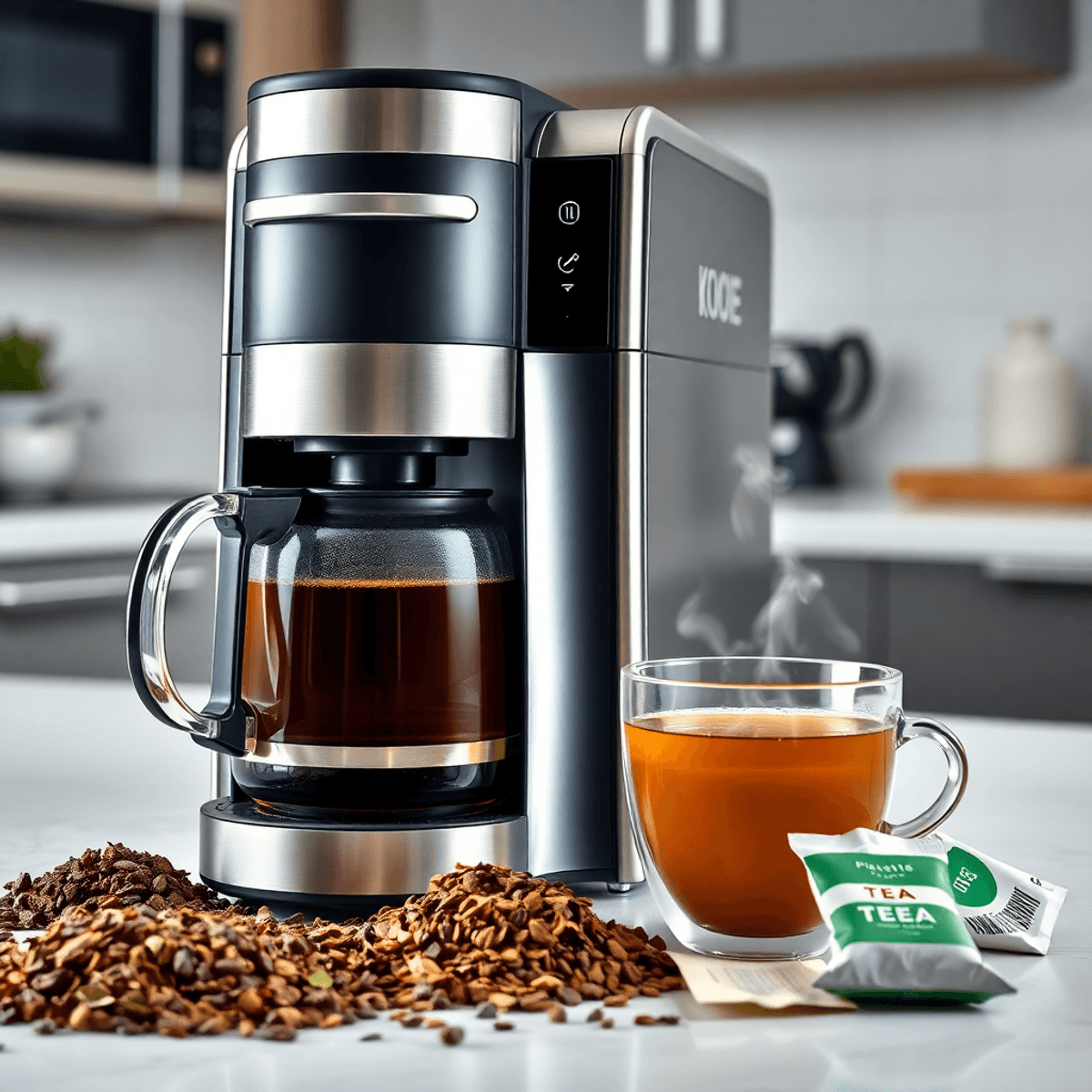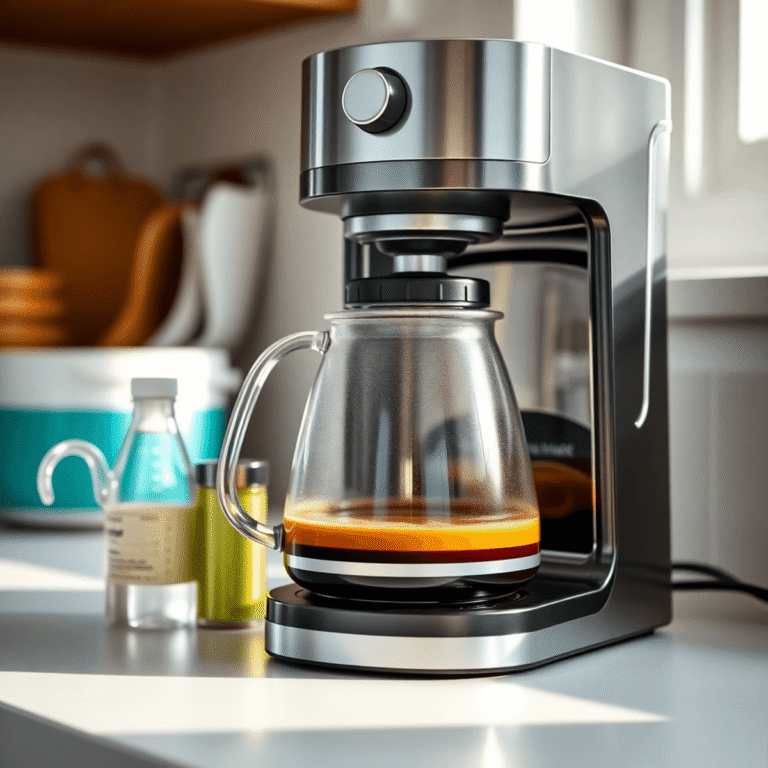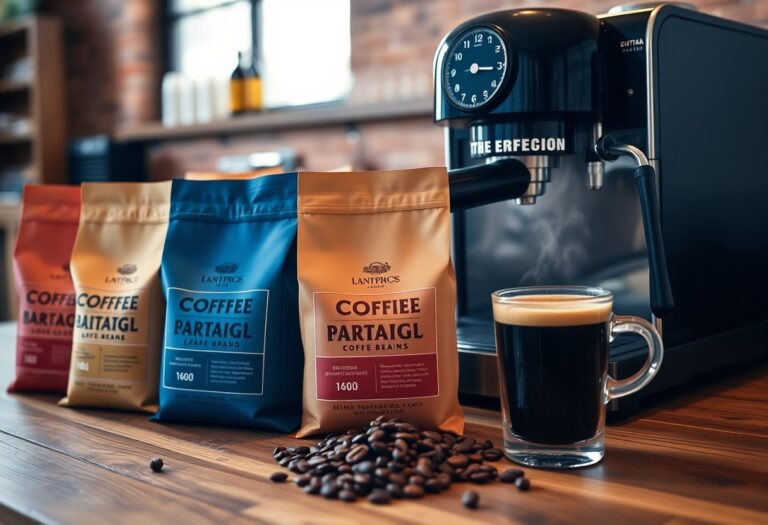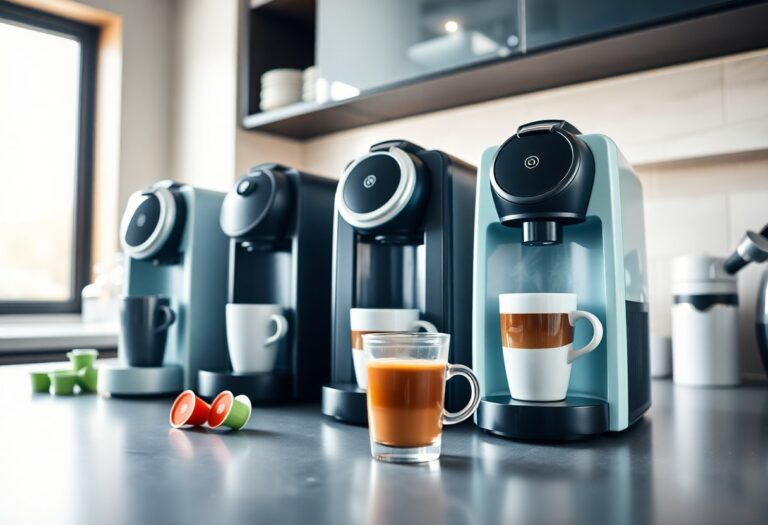How to Make Tea in a Coffee Machine: Alternative Uses
Using a coffee machine to brew tea might sound unconventional, but it’s gaining popularity among both tea enthusiasts and coffee lovers. The idea of making tea in a coffee machine taps into the versatility of your kitchen gadgets, offering an alternative use for the coffee maker you already have.
The interest in this method comes from its convenience and novelty. Instead of investing in specialized tea equipment, you can experiment with your existing coffee machine to prepare different types of tea. This approach is especially appealing for those who appreciate efficiency and enjoy exploring various tea brewing methods.
Key takeaway: While a coffee machine isn’t the traditional tool for making tea, it can still produce decent results with a few adjustments. Understanding these tweaks helps you unlock new possibilities, expanding the functionality of your coffee maker beyond just brewing coffee.
Understanding the Brewing Differences Between Coffee and Tea
Tea and coffee brewing processes differ significantly, impacting the flavor and quality of the final beverages:
1. Steeping Time
Tea requires varying steeping times based on the type of tea:
- Green teas: 1-3 minutes
- White teas: 4-5 minutes
- Oolong teas: 4-7 minutes
- Black teas: 3-5 minutes
- Herbal teas: 5-7 minutes
2. Water Temperature for Tea
Different teas thrive at specific water temperatures:
- Delicate greens: 150-180°F
- Whites and oolongs: 180-200°F
- Blacks and herbals: 200-212°F
Understanding these differences is crucial to ensure optimal extraction of flavors from various teas.
Method 1: Brewing Tea Using a Drip Coffee Maker
Using a drip coffee maker for tea brewing is simple and accessible, especially if you already have the machine at home. This method works well with both tea bags and loose leaf tea when used correctly.
Step-by-Step Guide to Drip Coffee Maker Tea Brewing
-
Choose Your Tea
Strong black teas such as Assam, Darjeeling, or English Breakfast perform best in a drip coffee maker since their robust flavors can withstand shorter brew times. Green teas and delicate whites risk becoming bitter or weak due to temperature and steeping constraints. -
Prepare the Machine
Remove any existing coffee grounds and thoroughly clean the filter basket to avoid flavor contamination from coffee oils. Insert a tea bag or place loose leaf tea inside a clean paper or reusable filter designed for drip machines. -
Add Water
Fill the water reservoir with fresh, cold water. Avoid overfilling to prevent diluted flavor. -
Start Brewing
Turn the machine on and let hot water drip through the tea-filled filter into the carafe below. The process usually takes around 5 minutes, depending on your machine’s flow rate. -
Adjust Brew Time and Strength
If your machine has a timer or programmable settings, extend the brew time slightly to increase extraction. For stronger tea, consider doubling the amount of tea leaves or using two tea bags per pot.
Pros of Using a Drip Coffee Maker for Tea
- Convenience: No need for extra equipment; just swap out coffee grounds for tea.
- Hands-Free Brewing: The machine handles heating and pouring automatically.
- Large Batch Capability: Brew multiple cups at once for sharing or storing.
Cons to Consider
- Weaker Flavor Extraction: Short brew times and fixed temperatures can result in mild or under-extracted tea compared to traditional steeping.
- Limited Temperature Control: Most drip machines heat water close to boiling (around 200°F), which may scorch delicate green or white teas.
- Potential Cross-Flavor: Residual coffee oils can affect taste unless the machine is cleaned thoroughly before use.
Using tea bags in coffee maker setups suits beginners looking for ease but experimenting with loose leaf tea drip method provides more control over strength and quality—especially if you use high-quality filters that allow better infusion.
This approach introduces an alternative way to enjoy your favorite teas without special equipment but requires some trial and error to perfect according to taste preferences.
Method 2: Steeping Tea Inside the Carafe
Tea lovers have discovered a clever hack to improve their tea brewing using a drip coffee maker – steeping tea bags directly inside the carafe. This unconventional method offers a unique twist to traditional tea brewing, producing robust flavors while simplifying the cleanup process.
How It Works
- By placing tea bags directly inside the carafe, you can bypass the need for filters, creating a more direct infusion of the tea leaves with the hot water. This technique allows for a stronger extraction of flavors from the tea, resulting in a bolder and more intense brew compared to using conventional methods.
- Additionally, steeping tea inside the carafe minimizes messiness during cleanup. Without the use of filters or additional components, there are fewer parts to clean up afterward. This streamlined approach not only saves time but also reduces the hassle associated with traditional brewing methods.
Why You Should Try It
Embracing this innovative way of making tea in a coffee machine can add a new dimension to your tea-drinking experience. The simplicity and efficiency of steeping tea bags directly inside the carafe offer a convenient alternative for those looking to explore creative ways to enjoy their favorite teas without compromising on flavor intensity. So why not give this drip coffee maker hack a try and unlock a whole new world of tea possibilities?
Tea lovers can now savor richer and more potent brews by adopting this unconventional yet effective method of steeping tea inside the carafe of a coffee machine. Elevate your tea brewing experience with this innovative approach that promises bold flavors and hassle-free cleanup!
Method 3: Exploring ‘Tea Espresso’ with an Espresso Machine
To create a unique and intense tea experience, consider exploring the concept of ‘tea espresso.’ This method harnesses the power of an espresso machine to extract robust flavors from finely ground loose-leaf tea. By using the machine’s portafilter, you can produce a concentrated tea shot that offers a different dimension to your tea brewing repertoire.
Brewing Tea Espresso: Step-by-Step Guide
-
Selecting Your Tea: Choose a high-quality loose-leaf tea that can withstand the intensity of the extraction process. Varieties like black tea or oolong tea work well for this method.
-
Grinding the Tea: Grind the loose-leaf tea coarsely to ensure optimal extraction in the portafilter. Avoid grinding too fine, as it may lead to bitterness.
-
Tamping and Brewing: Fill the portafilter with the ground tea, tamp it down gently, and lock it into the espresso machine. Brew the tea shot using water at around 195-205°F to prevent scorching delicate leaves.
-
Monitoring Extraction: Keep an eye on the extraction time to prevent over-extraction, which can result in bitterness. Aim for a balanced flavor profile with rich, concentrated notes.
-
Serving Your Tea Espresso: Once brewed, enjoy your concentrated tea shot as is or incorporate it into various beverages like lattes or milk teas for a creative twist.
By mastering the art of tea espresso preparation, you can elevate your tea drinking experience and savor the bold flavors that this method brings forth. Experiment with different teas and brewing techniques to discover your perfect cup of ‘tea espresso.’
Serving Suggestions and Variations for Tea Espresso Lovers
Tea espresso opens up exciting possibilities beyond drinking straight shots. You can experiment with tea espresso recipes that elevate traditional milk teas by using concentrated tea shots brewed from your espresso machine.
Popular milk tea ideas using tea espresso include:
-
Jasmine Milk Tea: Brew a strong jasmine tea espresso shot, then mix it with steamed milk and a touch of honey or simple syrup. This method intensifies the floral aroma and delivers a creamy, fragrant drink that rivals café versions.
-
Hong Kong-style Milk Tea: Combine black tea espresso shots with evaporated milk and sugar to create the iconic rich and smooth texture. The concentrated extraction mimics the robust flavor profile typical of this classic beverage.
-
Chai Latte Variation: Use spiced black tea grounds in your espresso machine to craft a chai concentrate, then blend it with frothed milk and a pinch of cinnamon or nutmeg for warmth.
-
Matcha Espresso Fusion: For an inventive twist, mix matcha powder with a shot of black tea espresso to balance earthy bitterness with bold tea intensity.
Incorporating your tea espresso into milk-based drinks enhances both flavor depth and texture. Adjust sweetness levels and milk types (dairy or plant-based) to match your taste preferences. Using an espresso machine as a base for these beverages allows you to customize strength and temperature conveniently, creating café-quality milk teas at home.
Experimentation with these variations offers a fresh approach to enjoying tea beyond traditional steeping methods, combining the convenience of espresso machines with beloved global tea flavors.
Cleaning and Maintenance Tips When Switching Between Brews
Ensuring a thorough cleaning routine is crucial to prevent cross-contamination between different beverages made in your machine.
Recommended Cleaning Routines
After alternating between coffee and tea sessions, follow these steps to maintain the integrity of your brews:
- Daily Rinse: Run a hot water cycle without any coffee or tea in the machine to flush out any remaining residues.
- Weekly Deep Clean:
- Disassemble removable parts like the filter basket and carafe and wash them with warm soapy water.
- Use a mixture of equal parts water and vinegar to descale the internal components of the machine.
- Monthly Descaling:
- Perform a thorough descaling process using a commercial descaling solution or a homemade mixture of vinegar and water to eliminate mineral build-up.
By following these cleaning practices, you can ensure that your coffee machine remains free from flavor contamination and consistently produces high-quality beverages.
Other Alternative Methods Compared to Coffee Machines: A Brief Overview
While we’ve explored some unconventional ways to make use of a coffee maker, there are other tools specifically designed for steeping excellence that deserve consideration too.
French Press for Tea
The French press, typically associated with coffee brewing, can also work wonders for tea enthusiasts. Its design allows for full immersion of tea leaves, extracting flavors and aromas efficiently. Whether you’re a fan of delicate white teas or robust black blends, the French press offers versatility in brewing various types of tea.
Loose Leaf Infusers
For those who prefer a more hands-on approach to tea preparation, loose leaf infusers are an excellent choice. These simple yet effective tools allow you to steep loose tea leaves directly in your cup or teapot. With options like stainless steel mesh infusers or silicone designs, you can enjoy the convenience of brewing without compromising on taste.
While coffee machines may offer convenience and speed, these alternative methods provide an opportunity to explore the artistry behind tea brewing.
Pros and Cons of Making Tea in Coffee Machines: Final Thoughts
Using a coffee maker for tea brewing presents a clear convenience vs quality tradeoff. Understanding the pros cons making tea coffee maker helps you decide if this approach suits your needs.
Advantages:
- Ease of Use: Coffee machines automate much of the process, allowing you to brew tea quickly without mastering traditional steeping techniques.
- Time-Saving: You can make multiple cups in one cycle, which is handy if you want to serve several people or prepare tea alongside coffee.
- Multi-Purpose Appliance: Utilizing a single device for both beverages reduces kitchen clutter and appliance costs.
- Consistent Water Flow: The machine delivers hot water evenly over tea leaves or bags, which can help extract flavor efficiently when adjusted properly.
Disadvantages:
- Potential Flavor Compromise: Coffee makers often don’t reach the ideal temperature for delicate teas, leading to under-extracted or bitter brews.
- Limited Steeping Control: Fixed brewing cycles mean you cannot easily adjust steeping time or intensity compared to manual methods.
- Risk of Cross-Contamination: Residual coffee oils and flavors may linger in the machine, affecting the purity of your tea’s taste.
- Weaker Extraction: Shorter contact between water and leaves usually results in milder flavors that might disappoint serious tea enthusiasts.
Choosing to make tea in a coffee machine means balancing convenience against the desire for an authentic, nuanced cup. If ease is your priority, this method works well. If you seek the best flavor profile, dedicated tea tools may serve better.
Conclusion
How to make tea in a coffee machine offers you valuable alternative brewing insights. This approach opens up possibilities for convenience and creative experimentation using devices already in your kitchen. Trying different methods—from drip coffee makers to espresso machines—can help you discover what suits your taste preferences best.
Keep these points in mind:
- Using a coffee machine for tea is practical but may not match the flavor precision of dedicated tea brewers.
- Adjust steeping times and tea types to maximize extraction and avoid weak or bitter results.
- Thorough cleaning is essential when switching between coffee and tea to maintain pure flavors.
This summary making tea in coffee machine highlights that while a coffee machine can serve as an alternative brewing tool, investing in specialized equipment designed for tea steeping will likely provide superior taste and control. Embrace experimentation but recognize the strengths of traditional tea-making devices for the best experience.







